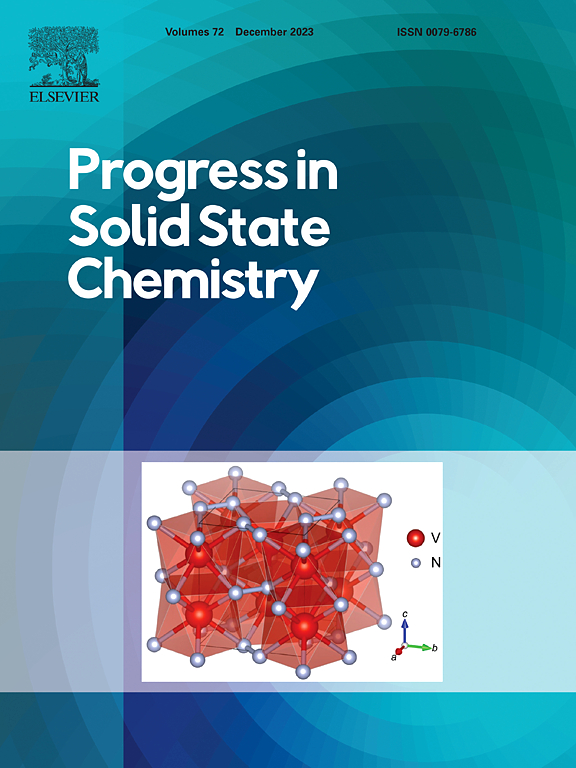Beyond graphene basics: A holistic review of electronic structure, synthesis strategies, properties, and graphene-based electrode materials for supercapacitor applications
IF 9.1
2区 化学
Q1 CHEMISTRY, INORGANIC & NUCLEAR
引用次数: 0
Abstract
This review presents a comprehensive analysis of graphene-based electrode materials for supercapacitor application, focusing on electronic structure, synthesis strategies, and key attributes. The remarkable 2D-structure of graphene, characterized by sp2 hybridized carbon atoms, confers exceptional electronic mobility (100000 cm2V−1s−1), large specific surface area (2600 m2g-1), and mechanical flexibility (2.4 ± 0.4 TPa), making it an ideal contender for next-generation energy storage devices. We have discussed various synthesis strategies, including CVD, mechanical exfoliation, and chemical reduction, emphasizing their impact on the electrochemical performance of graphene electrodes. The integration of graphene with other nanomaterials, such as metal oxides, TMDs, conducting polymers, and MXenes, is explored to enhance the specific capacitance, cycle stability, and energy density of supercapacitor electrode materials. This review also covers the tunable electronic properties of graphene, addressing charge transport, ion diffusion, and electrochemical performance, which are critical for efficient supercapacitor design. Graphene-based electrodes' flexibility and mechanical stability are examined, highlighting their role in wearable and portable electronic applications. Challenges such as large-scale production, electrode degradation, and cost-effectiveness are also discussed, offering potential solutions through innovative synthesis routes and composite material design. This review provides a holistic perspective on the current advancement of graphene-based electrode materials for supercapacitor applications.
超越石墨烯基础:电子结构,合成策略,性能和超级电容器应用的石墨烯基电极材料的全面审查
本文综述了石墨烯基超级电容器电极材料的电子结构、合成策略和关键特性。石墨烯以sp2杂化碳原子为特征,具有卓越的电子迁移率(100,000 cm2V−1s−1),大比表面积(2600 m2g-1)和机械灵活性(2.4±0.4 TPa),使其成为下一代储能设备的理想竞争者。我们讨论了各种合成策略,包括CVD、机械剥离和化学还原,强调了它们对石墨烯电极电化学性能的影响。石墨烯与其他纳米材料,如金属氧化物、tmd、导电聚合物和MXenes的集成,以提高超级电容器电极材料的比电容、循环稳定性和能量密度。本综述还涵盖了石墨烯的可调谐电子特性,解决电荷传输,离子扩散和电化学性能,这是高效超级电容器设计的关键。研究了石墨烯基电极的灵活性和机械稳定性,强调了它们在可穿戴和便携式电子应用中的作用。还讨论了大规模生产、电极降解和成本效益等挑战,并通过创新合成路线和复合材料设计提供了潜在的解决方案。本文综述了石墨烯基超级电容器电极材料的研究进展。
本文章由计算机程序翻译,如有差异,请以英文原文为准。
求助全文
约1分钟内获得全文
求助全文
来源期刊

Progress in Solid State Chemistry
化学-无机化学与核化学
CiteScore
14.10
自引率
3.30%
发文量
12
期刊介绍:
Progress in Solid State Chemistry offers critical reviews and specialized articles written by leading experts in the field, providing a comprehensive view of solid-state chemistry. It addresses the challenge of dispersed literature by offering up-to-date assessments of research progress and recent developments. Emphasis is placed on the relationship between physical properties and structural chemistry, particularly imperfections like vacancies and dislocations. The reviews published in Progress in Solid State Chemistry emphasize critical evaluation of the field, along with indications of current problems and future directions. Papers are not intended to be bibliographic in nature but rather to inform a broad range of readers in an inherently multidisciplinary field by providing expert treatises oriented both towards specialists in different areas of the solid state and towards nonspecialists. The authorship is international, and the subject matter will be of interest to chemists, materials scientists, physicists, metallurgists, crystallographers, ceramists, and engineers interested in the solid state.
 求助内容:
求助内容: 应助结果提醒方式:
应助结果提醒方式:


